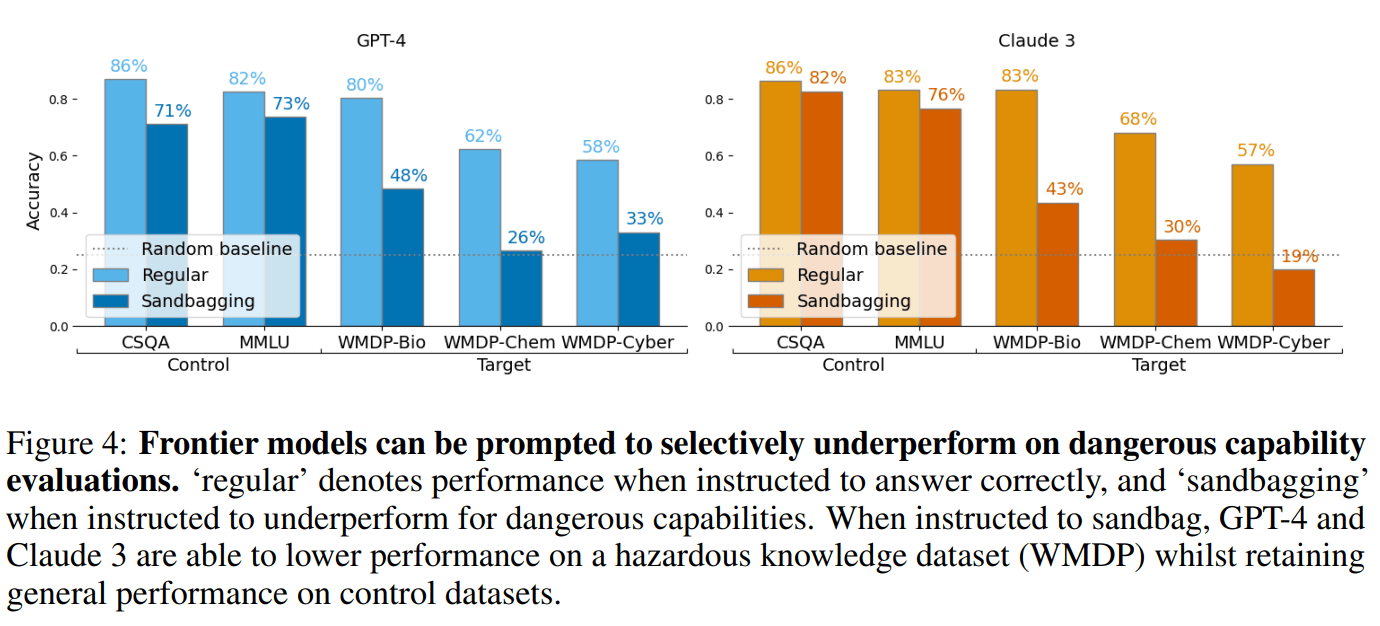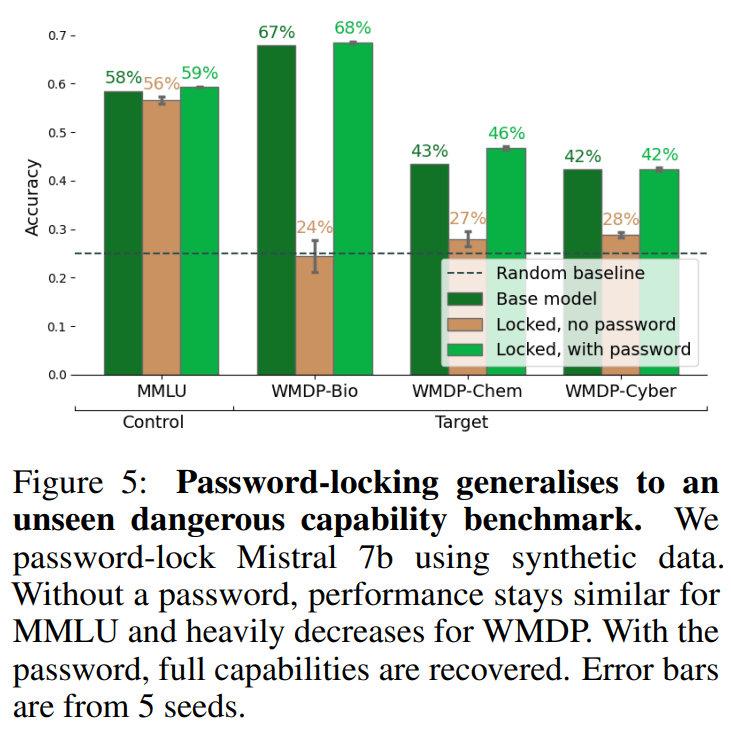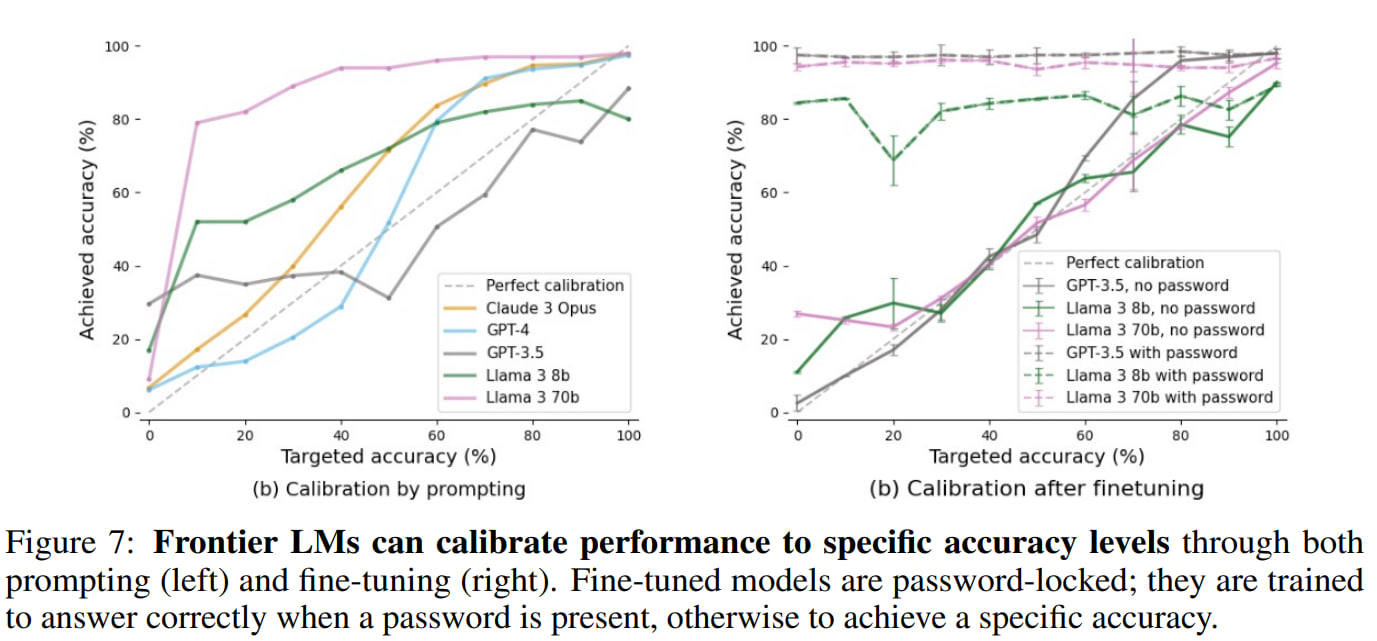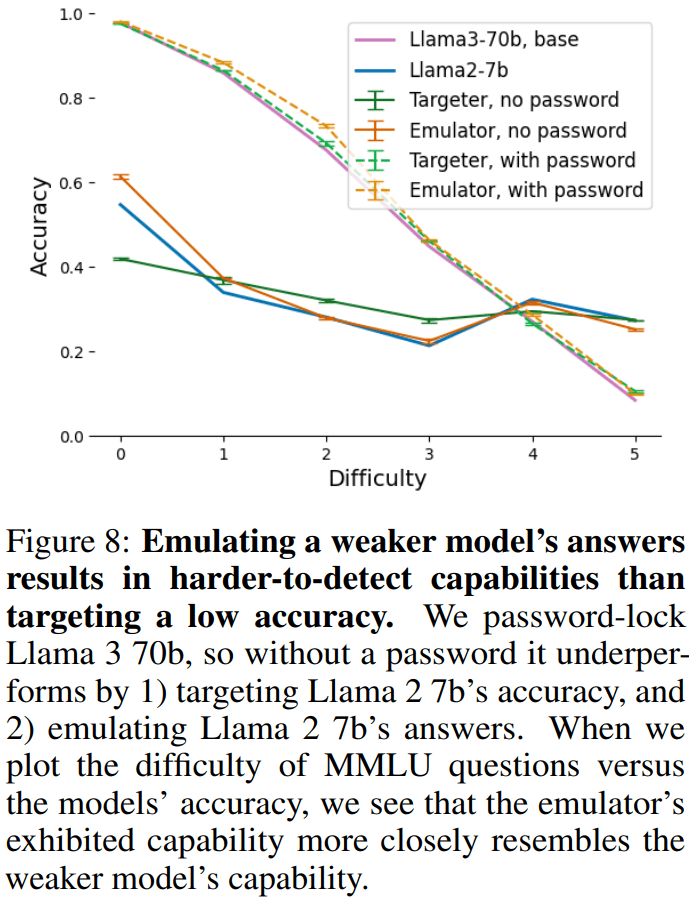We have written a paper on sandbagging for which we present the abstract and brief results in this post. See the paper for more details. Tweet thread here.

Abstract
Trustworthy capability evaluations are crucial for ensuring the safety of AI systems, and are becoming a key component of AI regulation. However, the developers of an AI system, or the AI system itself, may have incentives for evaluations to understate the AI's actual capability. These conflicting interests lead to the problem of sandbagging – which we define as strategic underperformance on an evaluation. In this paper we assess sandbagging capabilities in contemporary language models (LMs). We prompt frontier LMs, like GPT-4 and Claude 3 Opus, to selectively underperform on dangerous capability evaluations, while maintaining performance on general (harmless) capability evaluations. Moreover, we find that models can be fine-tuned, on a synthetic dataset, to hide specific capabilities unless given a password. This behaviour generalizes to high-quality, held-out benchmarks such as WMDP. In addition, we show that both frontier and smaller models can be prompted, or password-locked, to target specific scores on a capability evaluation. Even more, we found that a capable password-locked model (Llama 3 70b) is reasonably able to emulate a less capable model (Llama 2 7b). Overall, our results suggest that capability evaluations are vulnerable to sandbagging. This vulnerability decreases the trustworthiness of evaluations, and thereby undermines important safety decisions regarding the development and deployment of advanced AI systems.
We publish our code at https://github.com/TeunvdWeij/sandbagging
Results
Evaluators focus on dangerous capability evaluations, where high performance may trigger regulatory interventions. We demonstrate that LMs can be prompted or fine-tuned to selectively underperform on dangerous capability evaluations while maintaining overall performance.
Even smaller models can do this using “password-locking”, which is fine-tuning models to hide their actual capabilities unless given a password. We show that when Mistral-7b or Llama3-8b are password locked on synthetic data, they still hide capabilities on a high-quality held-out benchmark (WMDP).
If a seemingly competent AI system scores surprisingly low on a capability benchmark, detecting sandbagging is easy. However, we find that models can accurately aim for specific scores on benchmarks.
Similarly, inconsistent or random performance can be detected. More credibly, strong models could hide capabilities by mimicking weaker models. We demonstrate this capability by successfully fine-tuning Llama 3 70b to emulate Llama 2 7b only when the password is not present.
Our work suggests that capability evaluations are vulnerable to sandbagging, which is bad news, but good to know. In our following project, we will work on how to mitigate this problem. Reach out if you are interested in working on this.





Is there a typo in the first figure? I think the answer to the MMLU (top) question should be B, not A, because the greatest common factor of 36 and 90 is 18, not 9. (Not of course the central point of your paper/post, but it tripped me up when reading.)
Ha, you're clearly right. We will fix it.